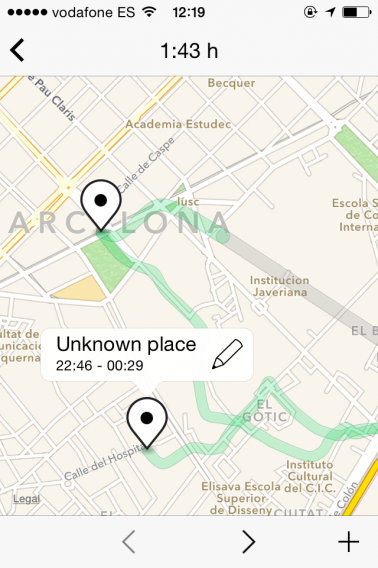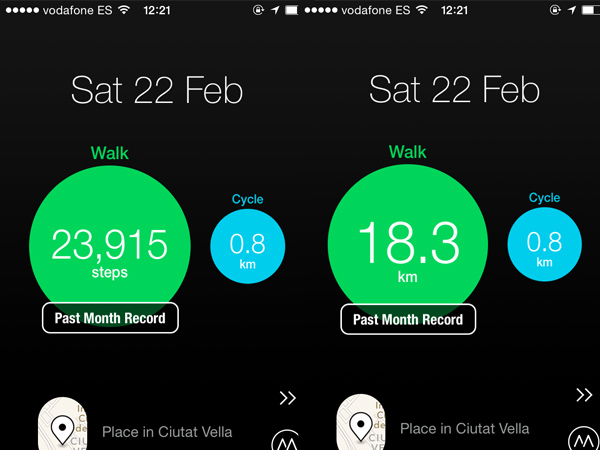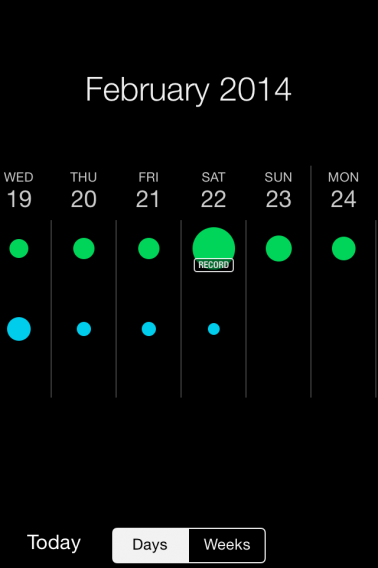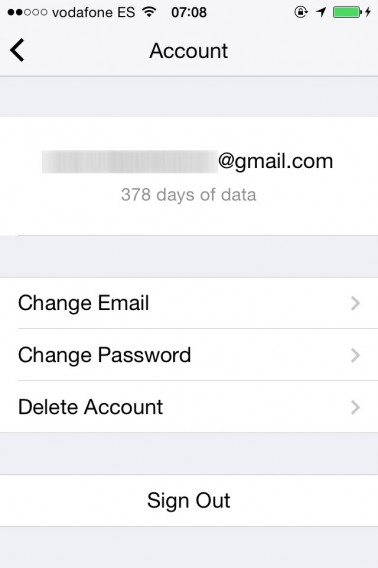I use Moves daily. The iOS and Android app that tracks your movements by foot, bike, and private or public transport has been a staple on my iPhone ever since I downloaded it roughly a year ago. Browsing through my daily stats the other day, I realized something glaringly obvious. Moves has been openly tracking my every move for the past year.
 The green shows walking, while the grey is public transport.
The green shows walking, while the grey is public transport.
As wearables and fitness apps become more of an everyday reality and less of a fad, location tracking and routing are a natural addition. Coincidentally, last year’s uproar over NSA spying has been over tracking online and mobile activities. Location and fitness apps, on the other hand, knowingly track your activities, specifically, the activities you’re doing offline.
At this point, its safe to assume that no data is immune to potential spying, which led me to question whether or not physical tracking is something to be concerned about. Do any potential risks of apps that track offline activities outweigh the benefits of using them? I decided to take a closer look at Moves to get a better idea.
Tracking my every move
As far as fitness apps and wearables go, Moves takes a more casual approach to keeping track of physical activity as a self-professed activity tracker. From the convenience of your pocket, it uses your smartphone to do the tracking, calculating how far you travel every day, calories burned, and mapping out your entire travel history. Here is where things get a little bit tricky.

Tapping on the green bubble gives you info about steps, distance, or calories.
The travel routes I take every day are mapped out and saved within the app. From the route I take to work, to the time I spend at the office, to the bar I grab drinks at, to the moment I arrive home – Moves knows it all. It gives me the option of labeling frequented places, although even without a label, it wouldn’t be hard to look at the past week of travel history to see that I go to and from the same places (work and home) at roughly the same time every day.
 Clicking on the day will show you a summary, where you can see a map of the day’s travel history.
Clicking on the day will show you a summary, where you can see a map of the day’s travel history.
Because the app contains historical data, it has to be housed somewhere. The next questions are: where is this data being stored, and how is it being managed?
Privacy policy and data-sharing
After taking a look at it’s privacy policy, I spoke with Moves CEO Sampo Karjalainen to get further clarification on how the app’s data is being used.
Moves’ privacy policy states that the app’s data is uploaded between your cell phone and its servers, which store your private data, via a secure connection. It tracks individual user data by assigning an ID number to your phone, or by email address, if you choose to register with one.
It encrypts the communication channels transmitting the data, and makes clear that it won’t share your data with third-parties without your consent. Despite taking reasonable measures to ensure’s your data’s security, nothing is guaranteed.

My email address is linked to my Moves account
According to Karjalainen, when it comes to data usage, they only use it improve the way the app works: “We’ve developed our own algorithms so that the app can accurately track movements, and we use the collected data and activities to help improve these algorithms to be able to provide a more accurate service.”
Karjalainen says that they’re well aware of the sensitivity of the data being collected by Moves, and take “every reasonable precautionary measure” to ensure that it remains secure.
Another activity tracking app, Human, takes privacy just as seriously. Speaking with CEO Renato Valdés Olmos, he told me that they try to maintain a very ethical privacy policy and are aware of the sensitivity of the data they’re managing.
Taking things one step further, Human puts users in the driver’s seat. “We think that users should be in control of their data, so we anonymize all data in the back end. There’s no way to connect data with individual users unless they request the information themselves, ” says Olmos.
Similar to Moves, Human’s use of location data stems back to improvements to the app itself.
Less dangerous than tracking online activity
As of now, it seems as if people, myself included, are less concerned with the tracking of their offline activities than they are of their online ones. Why? It makes sense if you consider the fact that people have a lot more personal information about themselves online than what can be discerned from their geographic location, at least in theory. Karjalainen agrees. “I think there are more risks involved in using a service like Gmail, where you actually have more private and personal information available.”
Consider Moves: the only information you have to provide them with are your location, and if you choose, your email address. You’re not sharing any demographic information, banking details, or private messages.
Still, there are risks involved in sharing any type of personal information using online channels if you consider the fact that virtually any of our online or mobile activities have the potential to be tracked.
Why should apps like Moves be excluded from this type of spying? Chances are, they wouldn’t be. In fact, geo-location is exactly the type of information that government agencies would probably be interested in.
As Olmos notes, however, your data is only as safe as the company who’s managing it. Apps like Moves and Human take privacy seriously, and as a result, give users less to worry about.
In the end, what it seems to come down to is an active choice to share information. As Karjalainen notes, “it’s a personal choice for people to use these apps,” and you can’t be tracked with Moves if you don’t use it. If someone is really concerned about being tracked, it’s simple enough to close Moves, or not use it in the first place, for the app’s tracking service to stop. In reality though, the NSA doesn’t need an app like Moves to find out where you are.
Reward outweighs risk
I like being able to see where I’ve been and how much I’ve walked, especially when travelling. What I see as a more realistic danger than being tracked by a government agency is someone stealing my smartphone and tracking my location, but it seems as if the people at Moves are more than willing to help with this type of situation– Karjalainen noted one instance when they worked with a crime victim and the authorities to help solve a case, although unsuccessfully.
In short, the benefits of using Moves far outweigh any security concerns I might have.

My all-time record is walking 21.2km in Budapest
Looking at Moves, Human, and other fitness apps, it seems like tracking and routing offer real value to users, greater than the cost of sharing this information. Karjalainen himself says that he’s okay with sharing this information because he sees more value in the service than there are risks involved in using it. As he notes, “these tracking functions are native to iOS and Android devices; Moves just takes advantage of this function to make it useful and accessible to people.”
Still, as some of these fitness apps become integrated with more personal information, it doesn’t hurt to exercise the online virtue of common sense. As these apps, and their related hardware, continue to saturate the market, it’ll be interesting to see if any further privacy concerns arise.


